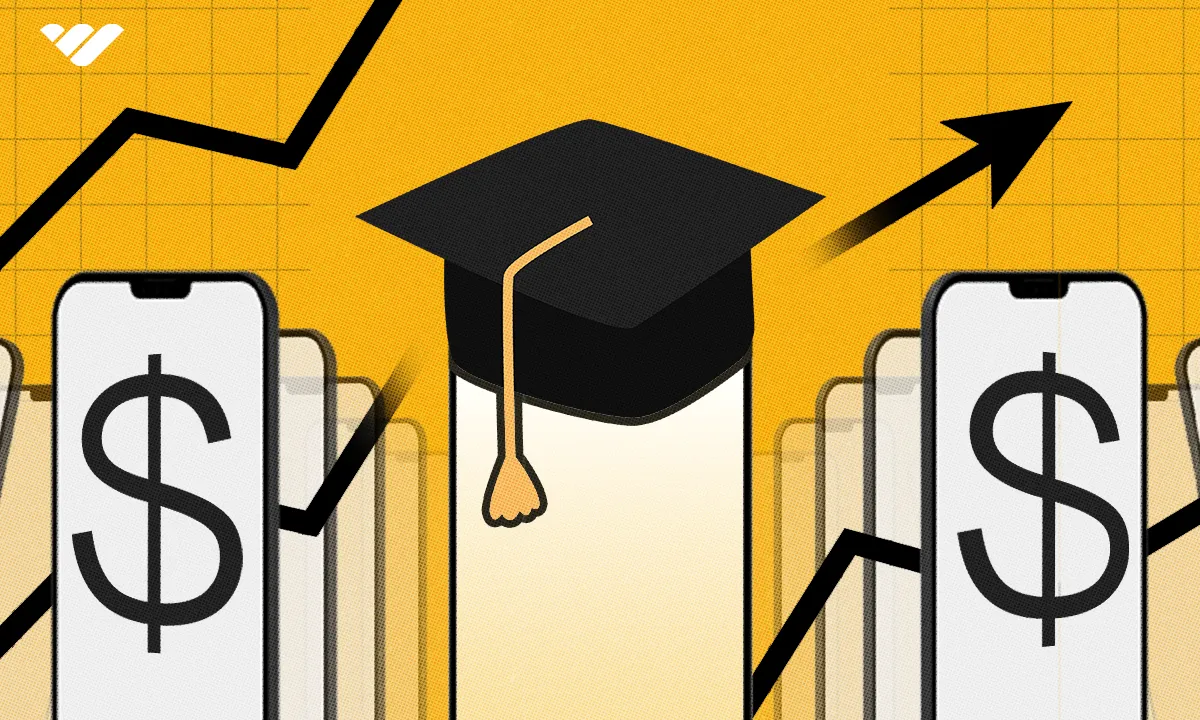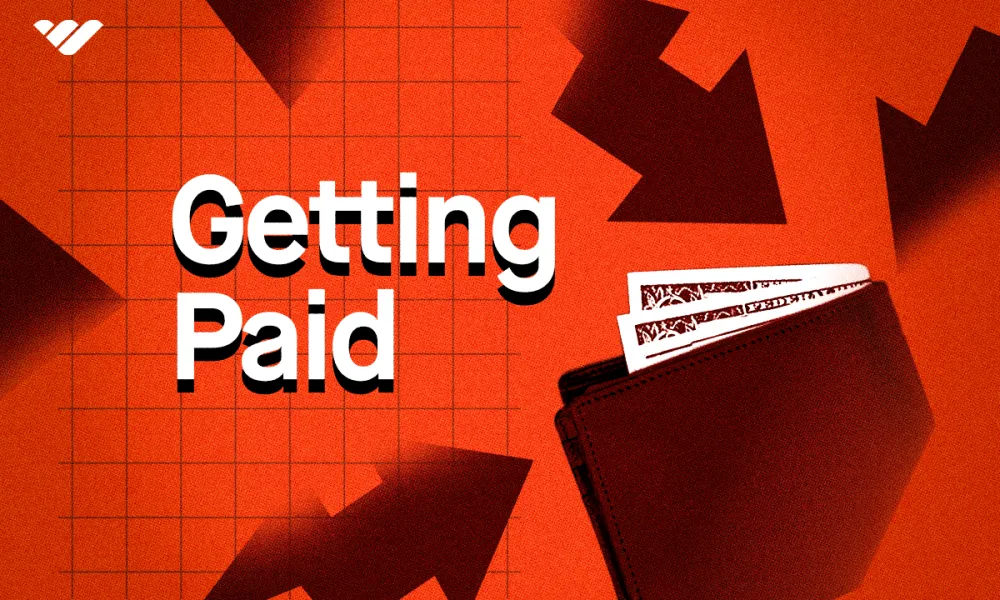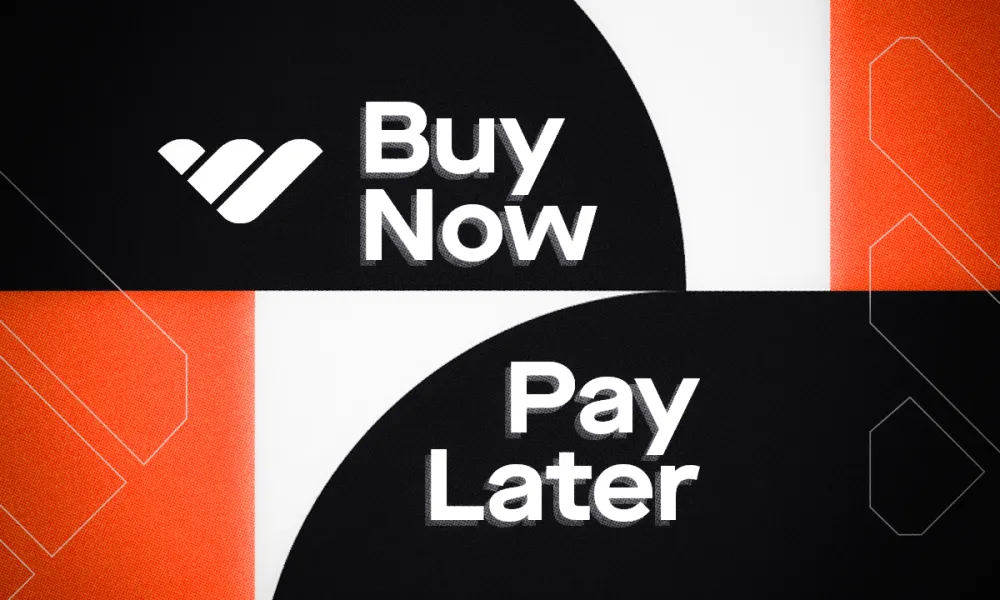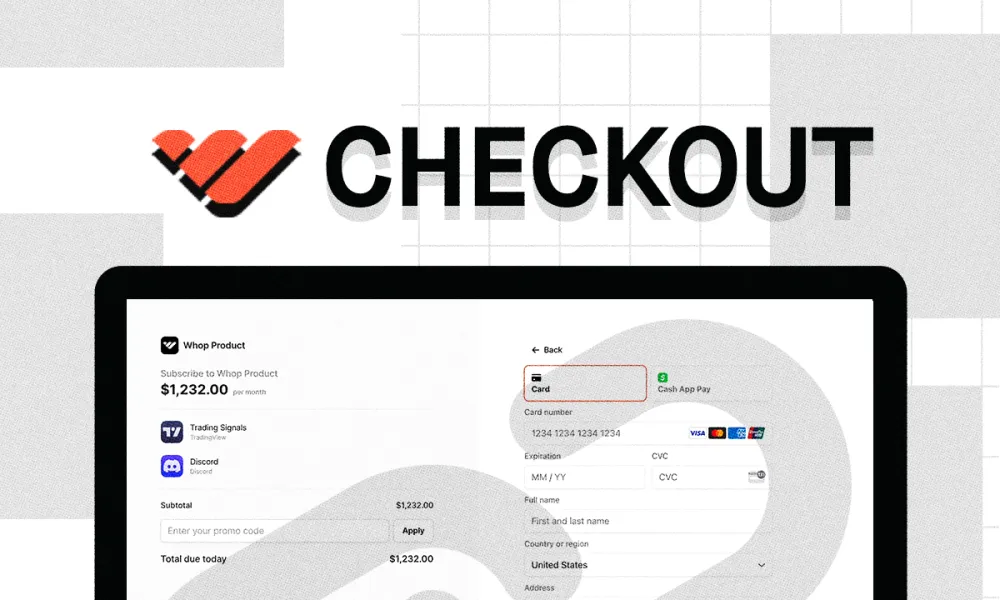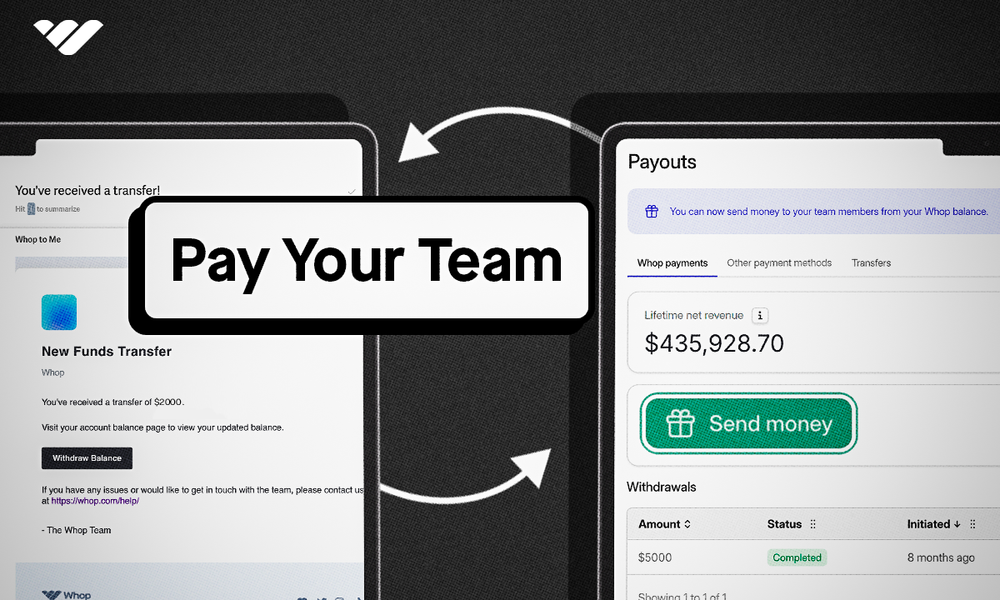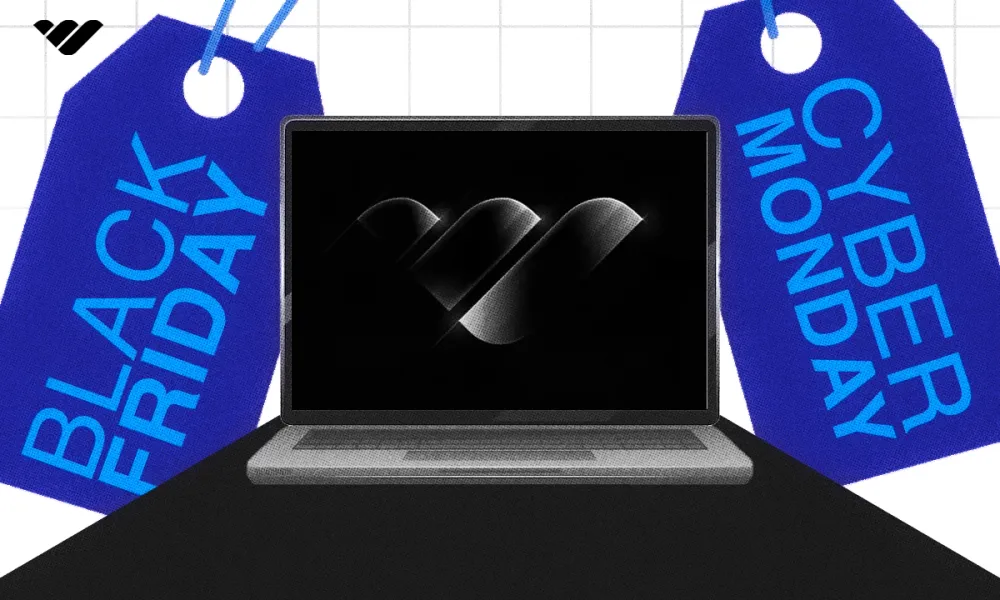Discover how universities are supporting the 40% of college students with side hustles by integrating Whop. Learn how Whop enhances entrepreneurship programs, helping students monetize their creative ideas and gain hands-on experience in the digital economy.
Key takeaways
- 40% of college students currently operate a side hustle according to College Pulse survey.
- 22% of college students have already monetized their social media presence in some form.
- Over 20 universities now use Whop platform to teach digital entrepreneurship in classrooms.
- Whop removes barriers by offering free access, 6 million user marketplace, and no-code tools.
- Universities pair traditional instruction with hands-on Whop application for real income opportunities.
A survey by College Pulse found that 40% of college students have a side hustle today.
University entrepreneurship centers support students interested in commercialization products and raising venture capital, but what are universities doing to support the 40% with different business ambitions?
Teaching entrepreneurship - The big opportunity for classes and programs
University entrepreneurship centers have become powerhouses of programs, courses, and innovative spaces designed to support students with big ideas. But there’s a trend in another direction.
Linda Dickerson Hartsock, Founder of the Blackstone LaunchPad at Syracuse University and Advisor for Strategic Initiatives shares why she thinks students are moving towards creative entrepreneurship:
“Now, more than ever, students are interested in creative entrepreneurship. While they are so talented, their challenge around content creation is community building and sales strategy to monetize their creative output — whether as a side hustle or full-time gig.
That’s the big opportunity this next generation of innovators is chasing, and it’s changing the way we think about entrepreneurship.”
And there’s data to support this observation.
22% of college students have already monetized their social media presence in some form, according to a 2023 survey by the Digital Marketing Institute, and over 20% are actively trying to build an influence presence on platforms like Instagram, TikTok, and YouTube.
So, what can universities do to support these ambitions?
How to teach entrepreneurship in the digital economy
Universities are interested in evolving with the times, and some are starting to add programs, classes, and events that support this new trend (and necessity!) for students to understand how to use the digital economy, whether for themselves or a company they may work for some day.
The tool they’re using? Whop.
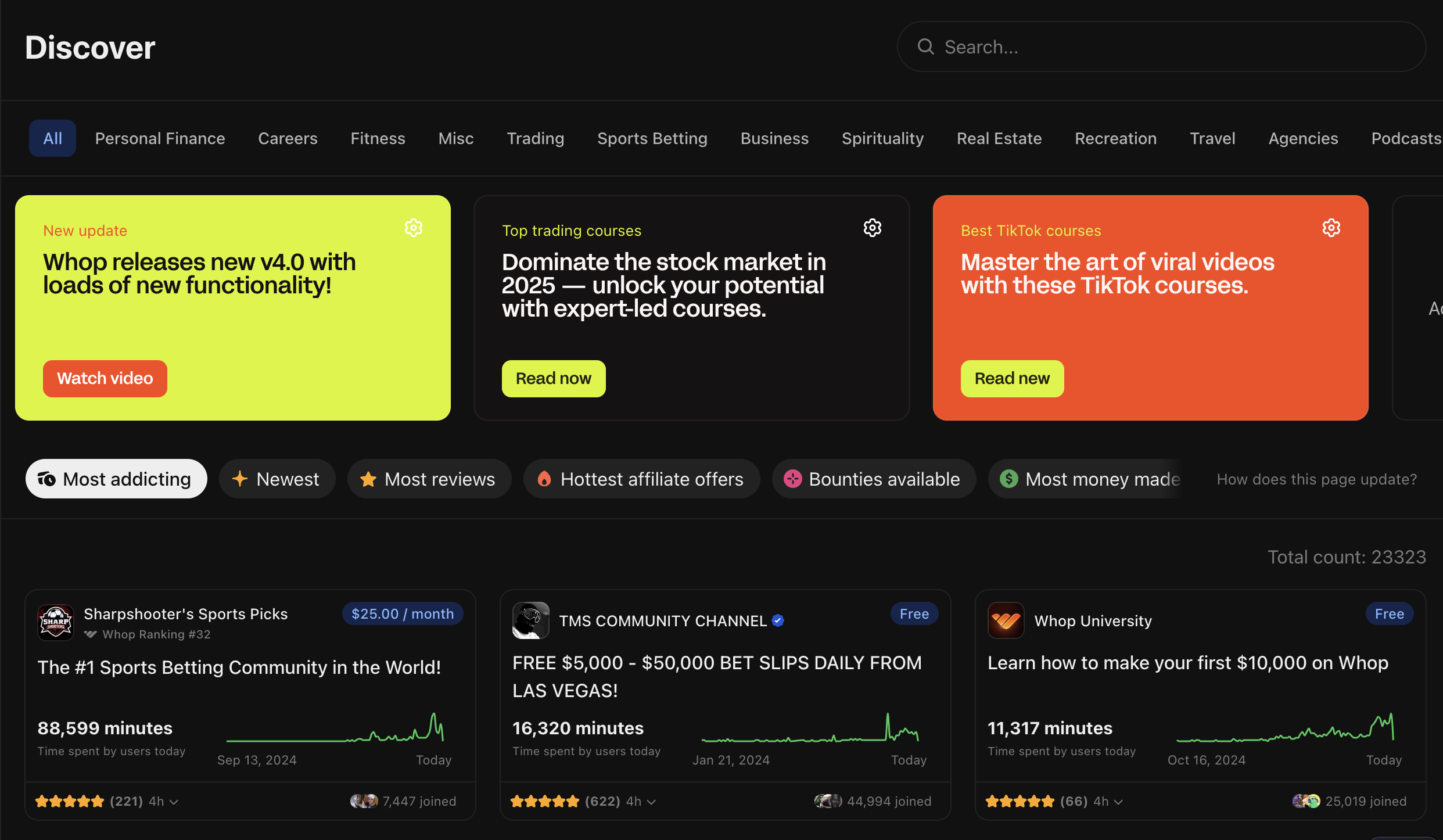
Whop is a platform where creators sell anything digital, and it’s completely free to get started. Whop is on a mission to give power back to the creators - they offer a platform where anybody can start a company in minutes, monetize a plethora of no-code digital products, and connect with other creators for ideas and collaboration, through their 'whops'. (Read more about what whops are in this guide).
Whop removes many of the barriers students face starting a company on their own:
- Access to capital and tech talent (Whop is free to get started and no-code)
- Access to an audience (Whop has over 6 million users in their marketplace)
- Education and connection to other creators (Whop has over 35,000 creators on the platform and an educational community unlike anything else online)
Universities are using Whop as a complementary tool in classrooms, hackathons, accelerator programs, and more.
Traditional classroom instruction is paired with application on Whop - and using Whop, students have an opportunity to not only have hands-on experience with entrepreneurship in the digital economy, but they have the opportunity to create a real, sustainable income on the platform. And, a digital footprint that speaks to their unique skills and talents.
Universities teaching entrepreneurship with Whop
Today, over 20 universities have started bringing Whop into the classroom, with a pipeline of 50 more that are looking to implement the free tool in classes and entrepreneurship center programming.
Here are a few examples of how universities are using Whop:
The University of South Carolina uses Whop for an Innovation and Design course
Innovation and Design is an undergraduate class at the University of South Carolina that uses an innovation tournament structure to teach problem solving and design skills.
This year, they added Whop to the course materials so students could not only develop business ideas, but actually launch them.
After some ideation and filtering, each student is building the Whop that best suits their individual idea. They will also launch team whops to further develop top opportunities.
Students have already canvassed existing whops, come up with novel concepts (especially those geared to college audiences), and made multiple pitches and refinements live in class.
“Whop takes an already fun, experiential class and adds a little extra juice due to the ease of getting student ideas launched and the fact that real dollars are immediately available.”
- Joel Wooten, Academic Director, MSBA Program and Associate Professor
Caroline Crowder, Executive Director at Boyd Innovation Center and Adjunct Professor at the University of South Carolina, had this to say about using Whop:
The University of Buffalo uses Whop for 3-week incubator and 48-hour hackathon-like event.
The University of Buffalo used Whop in multiple different ways during their hackathon.
1. The Digital Monetization Incubator: The instant hustle program
This three-week incubator is designed to help selected students build, launch, and monetize digital products on Whop. Participants are guided through product development, marketing, and sales strategies.
The program starts with an introduction to Whop and digital products, including sessions such as ‘Monetizing an existing audience’ (Creators with a following) and ’Building a following around a product’ (Marketing-first approach).
The incubator concludes with a presentation of whops created and results.
2. Whopa-ton Program: 48 hour digital product sprint
Participants build, launch, and monetize a digital product on Whop in real-time. The event is structured to maximize fast execution, marketing, and sales and starts with introduction material and a discussion on what business models work on Whop.
The students then ideate on new models and build a product roadmap, including a sales & marketing plan. One the second day students receive mentorship, and have the opportunity to present their results with prizes in various categories.
Whop is supporting this event by developing a live dashboard where students can see live results of user growth and revenue.
Take your entrepreneurship class or program to the next level with Whop
Whop is a powerful tool that complements an entrepreneurship class, adds value to a startup weekend or any other application where there's an interest in giving students hands-on experience with entrepreneurship.
The Whop team is here to support you with training, case studies, and dashboards showing student activity on your campus, as well as connections to other faculty using Whop.
Interested in joining the 70+ universities using Whop? Connect with us below!


